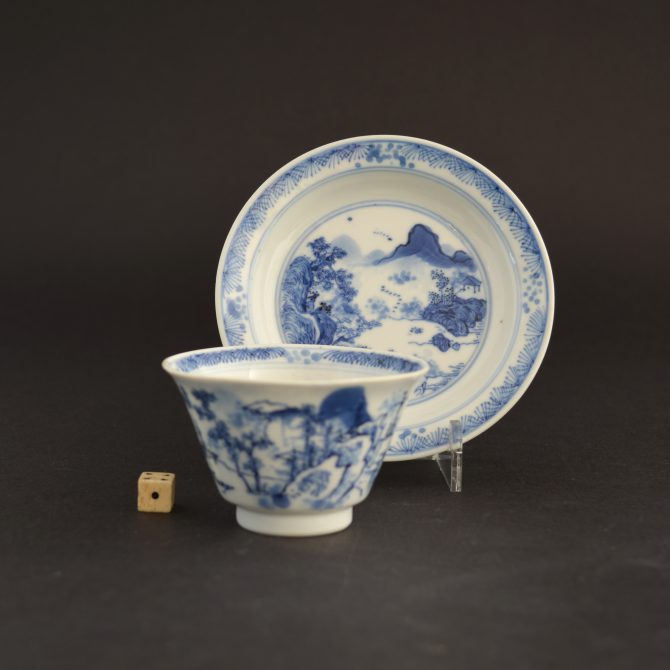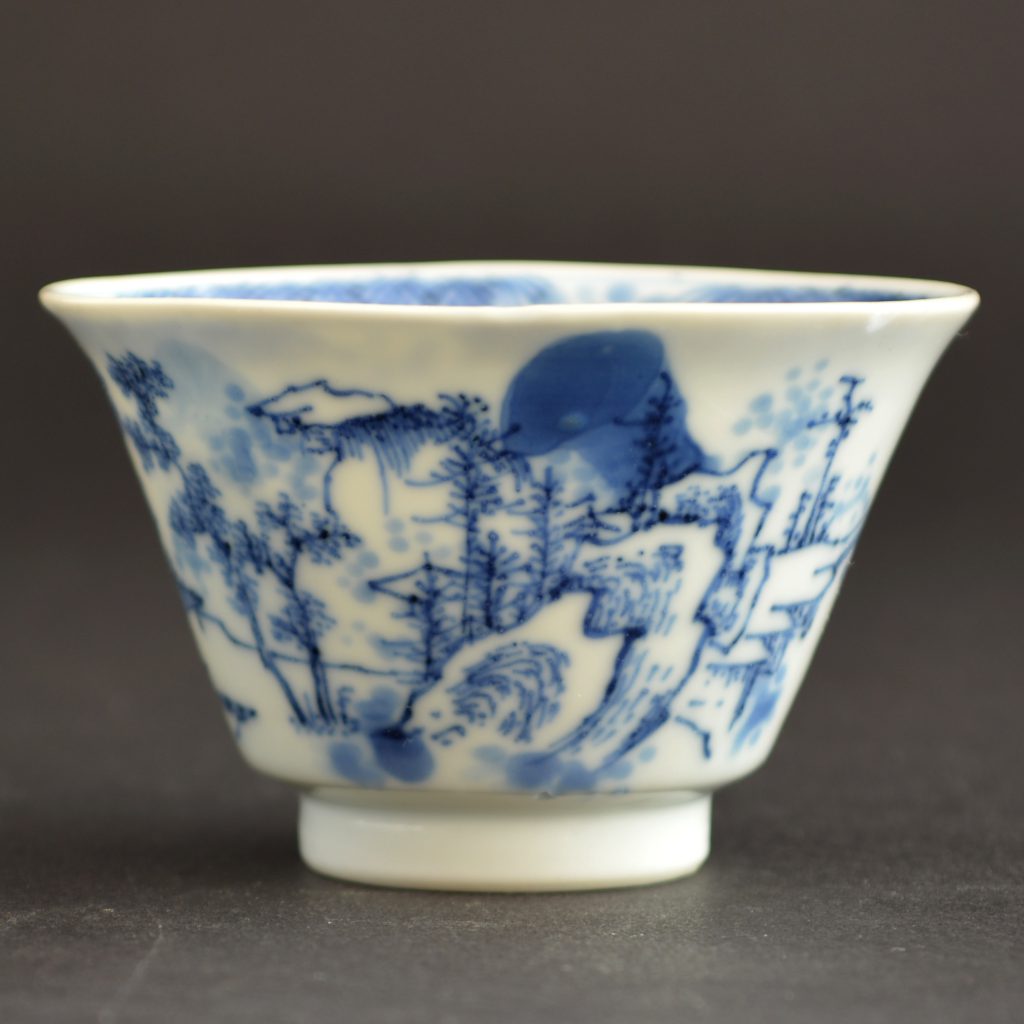
Kangxi Porcelain ‘Master of the Rocks’ Style Porcelain Teabowl and Saucer.
A Kangxi Blue and White porcelain ‘Master of the Rocks’ teabowl and saucer c.1690-1700. The thinly potted teabowl and saucer is painted in a slightly later version of ‘Master of the Rocks’ that relate to a series of plates .
SOLD
- Condition
- In very good condition, one minute chip to the outer rim of the teabowl c.2 x 2 mm.
- Size
- Diameter saucer : 10 cm (4 inches)
- Provenance
- N/A
- Stock number
- 24619
- References
- For plates with similar potting and painting decorated in 'Master of the Rocks' style use our 'Search' and look at 16754, 16755, 16756, 18970, 19516, 20515, 20862, 21901, 22034, 22592 and 23757.
Information
The Master of the Rocks Style :
The phrase Master of the Rocks is unfamiliar to many Chinese, it is another invented category used by western scholars and collectors to pigeon-hole groups of Chinese ceramics, rather like Kraakware or Celadon. However unlike either of these Master of the Rocks first coined by Gerald Reitlinger, is a clear, distinct group. This style lasted from about 1645 to 1690. The highly distinctive painting style consists of landscapes with massive powerful mountains in a linier technique. The style is, for want of a better word, ‘painterly’ and often includes distant mountains painted with a very wet brush that contrast with the linier mountains in the mid ground. The style usually employs a technique of blobby dots, either in the landscape or as a border. These dots are painted with a wet brush and have no outline. These designs were certainly inspired by late Ming scroll painters like Wang Jinazhng (active c.1628 – 1644). The same use of brush strokes in contour like parallels lines can be seen. Mountains with jagged peaks are piled up creating a dramatic structure. But where as many of the scroll painters are known, the ceramics artists are anonymous.
Later Master of the Rocks Style :
Master of the Rocks style porcelain is normally dated to the late Transitional or Early Kangxi Period in the reference books. We have followed this dating with all `Master of the Rocks` porcelain. But I now think plates of this type were made slightly later, after the re-opening of the kilns at Jingdezhen. When one compares the thin potting, rich watery blues and the milky white glaze of these plates to other `Master of the Rocks` pieces they appear quite different. The shape of the plate, thin potting, tones of blue and sheen of glaze relate to Kangxi Porcelain of the 1690`s not the earlier more robust, thickly potted `Master of the Rocks` pieces of the late Transitional or early Kangxi Period. The drawing of the Chenghua mark on the back is also very similar to Kangxi Porcelain of the 1690`s, for example the well know Rotterdam Riot plates of c.1692-1695 whose Chenghua Marks could even be by the same hand.
The 4 - character mark on the base of the 'Master of the Rocks' tea bowl and saucer may be read as:
'Mei yu ya zhi' - or 'Beautiful Jade Elegantly Made'. See 1529 in Gerald Davison's book.






